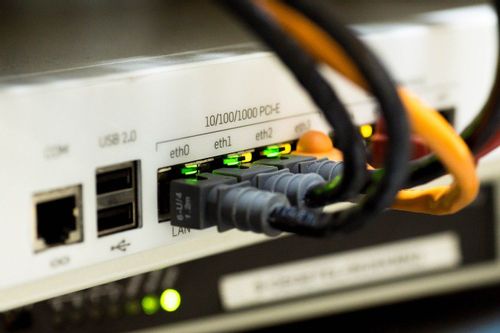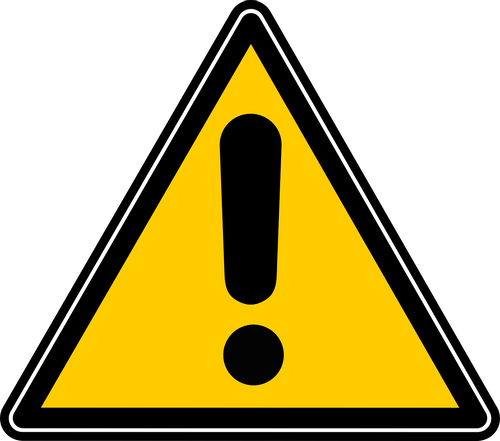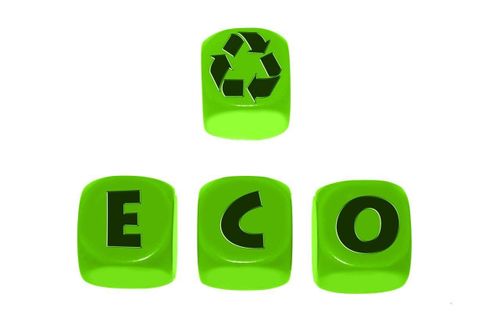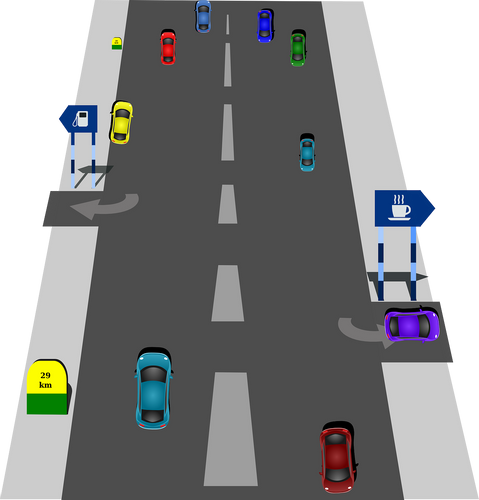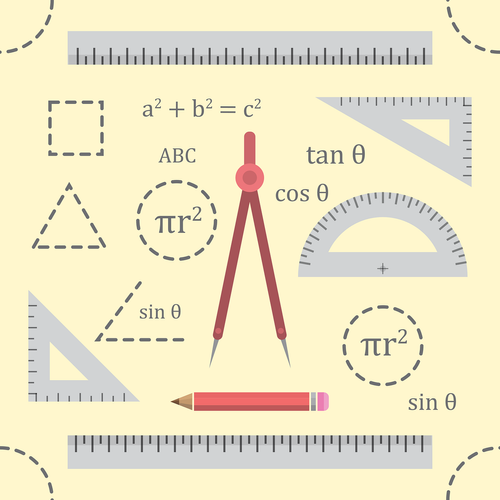Standards Packages
iTeh together with SIST has developed and compiled a comprehensive collection of standard packages to support your standard requirements. Our packages cover an array of content that includes quality management, risk management, road vehicles, machine safety, and much more. With over 200 packages to choose from, you are sure to find a collection to suit your standard needs.
Latest Standards
Field devices are a key component in intelligent transport systems (ITS). Field devices include traffic signals, message signs, weather stations, traffic sensors, roadside equipment for connected ITS environments, etc. The ISO 26048 series defines data that can be used to manage field devices, including device configuration, control and monitoring. Field devices can be quite complex, necessitating the standardization of many data concepts for exchange. As such, the ISO 26048 series is divided into several individual parts. This document (ISO/TS 26048-1) introduces the ISO 26048 series, provides content that is normatively referenced in subsequent parts, and defines data that is applicable to the management of a wide range of field devices. The scope of the ISO 26048 series does not define the logic used by the management station, the underlying protocols used to exchange the defined data elements, or internal design of the field device. However, the ISO 26048 series does define functional requirements on the interface and assumes an interface based on an SNMPv3 environment as specified by ISO 15784-2. NOTE Many of the concepts defined in this document were derived from NTCIP 1103[ REF Reference_ref_11 \r \h 1 08D0C9EA79F9BACE118C8200AA004BA90B0200000008000000110000005200650066006500720065006E00630065005F007200650066005F00310031000000 ] and NTCIP 1201[ REF Reference_ref_12 \r \h 2 08D0C9EA79F9BACE118C8200AA004BA90B0200000008000000110000005200650066006500720065006E00630065005F007200650066005F00310032000000 ], however, the design has been updated to better address security concerns. It is expected that future versions of NTCIP will migrate to the design defined in this document.
- Technical specification95 pagesEnglish languagesale 15% off
- Draft95 pagesEnglish languagesale 15% off
- Draft95 pagesEnglish languagesale 15% off
- Draft93 pagesEnglish languagesale 15% off
- Draft93 pagesEnglish languagesale 15% off
This document establishes principles and an evaluation indicator framework for assessing the effectiveness of a compliance management system. This includes evaluation criteria for specified indicators. This document also provides guidance as well as suggestions on the evaluation model. The guidance provided in this document aims to support the monitoring, measurement, analysis and evaluation of a compliance management system. It aims to support management review of the compliance management system to foster continual improvement. It does not add to, change or otherwise modify requirements for compliance management systems or any other standards. This document is applicable to the activities for evaluating the effectiveness of the compliance management system in all organizations, regardless of the type, size and nature, including organizations from the public, private or non-profit sector.
- Standard43 pagesEnglish languagesale 15% off
- Draft41 pagesEnglish languagesale 10% offe-Library read for1 day
- Draft43 pagesEnglish languagesale 15% off
- Draft43 pagesEnglish languagesale 15% off
This document specifies a lexicon of objects for the interoperability domain (ID). This document specifies ID base objects and their associated properties and input/output event types (i.e. in the form of a list of ID sensor, actuator, and control objects), and object state actions, which can be used to define interoperable application models.
- Standard229 pagesEnglish languagesale 15% off
IEC 60947-7-1:2025 specifies requirements for terminal blocks and test disconnect terminal blocks according to Annex D with screw-type or screw-less-type clamping units primarily intended for industrial or similar use and to be fixed to a support to provide electrical and mechanical connection between copper conductors. It applies to terminal blocks intended to connect round copper conductors, with or without special preparation, having a cross-section between 0,05 mm2/30 AWG and 300 mm2/600 kcmil, intended to be used in circuits of a rated voltage not exceeding 1 000 V AC up to 1 000 Hz or 1 500 V DC. The tests on terminal blocks are made with AC or DC supply as required in relevant clauses of this document.
This fourth edition cancels and replaces the third edition published in 2009. This edition constitutes a technical revision.
This edition includes the following significant technical changes with respect to the previous edition:
a) Scope extension for smaller conductor cross-sections;
b) Implementation of a contact pressure via insulation material (CoPI) test;
c) Introduction of new informative Annex E for larger cross-sections;
d) Reorganisation of all tables merged into two tables for electrical and mechanical values;
e) Implementation of AWG-sizes conductor types as an equivalent type of metric conductor with examples in Annex C;
f) Reorganisation of Annex D test disconnect terminal blocks to enhance readability;
g) Introduction of new informative Annex A for main characteristics of terminal blocks.
- Standard55 pagesEnglish languagesale 10% offe-Library read for1 day
The present document applies to monitoring and control of Infrastructure Environment i.e. power, cooling and building environment systems for telecommunication centres and access network locations; also, the monitoring of energy and environmental parameters: Power Energy Environmental (PEE) parameters for ICT equipment in telecommunications sites or datacenter or customer premises are considered. Interoperability of heterogeneous management interfaces and systems with multi-vendor equipment is the key issue. The present document gives a general approach from equipment to management system. The multi-part deliverable is composed of a generic core part (the present document) and several specific parts for equipment category.
The present document defines:
• The site equipment maps and its division in functional subsets e.g. DC system which introduces following parts of this multi-part deliverable.
• The generic set of exchanged information required at the interface of equipment, which is instanced for each equipment covered by following parts of this multi-part deliverable.
• The minimum requirement for network architecture allowing some compatibility with old existing interface and the mechanism to exchange data between network elements.
• The data interface protocol for remote or local site management (Machine to Machine Interface MMI) and Human Machine Interface HMI for monitoring and controlling.
• Recommendations for a management network such as dependability, data back-up, data coherence and synchronization all along the management network, response time, fault detection and partial service in case of failure.
• The Measurement accuracy of Power, Energy and Environmental Parameters (PEE).
- Standard90 pagesEnglish languagesale 15% off
- Standard90 pagesEnglish languagesale 15% off
- Standardization document90 pagesEnglish languagesale 10% offe-Library read for1 day
This document describes a classification of non-metallic blast-cleaning abrasives for the preparation of steel substrates before application of paints and related products. It specifies the characteristics which are required for the complete designation of such abrasives. This document applies to abrasives supplied in the new or unused condition only. It does not apply to abrasives either during or after use. NOTE Although this document has been developed specifically to meet requirements for preparation of steelwork, the properties specified will generally be appropriate for use when preparing other material surfaces, or components, using blast-cleaning techniques. These techniques are described in ISO 8504-2.
- Standard4 pagesEnglish languagesale 15% off
- Draft4 pagesEnglish languagesale 15% off
- Draft4 pagesEnglish languagesale 15% off
The present document specifies the technical requirements, limits and test methods for material sensing devices using UWB technology exterior material sensing devices for ground based vehicles below 10,6 GHz. The present document only covers non-contact based UWB material sensing devices with antenna connectors according to ECC/DEC(07)01 [i.1] and Commission Implementing Decision (EU) 2024/1467 [i.2]. Further details of the covered EUT for external material sensing applications for ground-based vehicles and the related categories can be found in clause 4.2 of the present document.
NOTE: The relationship between the present document and essential requirements of article 3.2 of Directive 2014/53/EU [i.3] is given in annex A.
- Standard49 pagesEnglish languagesale 15% off
- Standard49 pagesEnglish languagesale 10% offe-Library read for1 day
IEC 60793-2-50:2025 is applicable to optical fibre categories B-652, B-653, B-654, B-655, B‑656 and B-657. A map illustrating the connection of IEC designations to ITU-T designations is shown in Table 1. These fibres are used or can be incorporated in information transmission equipment and optical fibre cables. Three types of requirements apply to these fibres:
- general requirements, as defined in IEC 60793-2;
- specific requirements common to the class B single-mode fibres covered in this document and which are given in Clause 4;
- particular requirements applicable to individual fibre categories or specific applications, which are defined in Annex A to Annex F.
For some fibre categories (shown in the relevant family specifications), there are sub-categories that are distinguished on the basis of difference in transmission attribute specifications. The designations for these sub-categories are documented in the individual family specifications. Table 1 shows a map from the IEC designations to the ITU-T recommendations.
This seventh edition cancels and replaces the sixth edition published in 2018. This edition constitutes a technical revision. This edition includes the following significant technical changes with respect to the previous edition.
a) The addition of a 200 µm coating nominal outer diameter option for B-654A, B, C fibres in Annex C
- Standard43 pagesEnglish languagesale 10% offe-Library read for1 day
This document provides guidance for the determination and development of competencies necessary to achieve an organization's compliance management system objectives. It provides guidance for establishing the adequate level of competencies of certain internal functions and third parties. This document is applicable to all organizations regardless of the type, size and nature of the activity, as well as whether the organization is from the public, private or non-profit sector. This document does not add to, change or otherwise modify requirements for compliance management system or any other standards.
- Standard19 pagesEnglish languagesale 15% off
- Draft24 pagesEnglish languagesale 10% offe-Library read for1 day
- Draft19 pagesEnglish languagesale 15% off
- Draft19 pagesEnglish languagesale 15% off
This document specifies computational methods for determining the acoustical source level of projectile sound and its one-third octave band spectrum, expressed as the sound exposure level for nominal mid-band frequencies from 12,5 Hz to 10 kHz. It also specifies a method on how to use this source level to calculate the sound exposure level at a receiver position. Results obtained with this document can be used as a basis for assessment of projectile sound from shooting ranges. Additionally, the data can be used to determine sound emission or immission from different types of ammunition and weapons. The prediction methods are applicable to outdoor conditions and straight projectile trajectories. Two computational methods are given to determine the acoustical source level: one for streamlined projectile shapes and one for non-streamlined shapes, such as pellets.
- Standard41 pagesEnglish languagesale 15% off
- Standard43 pagesFrench languagesale 15% off
- Draft41 pagesEnglish languagesale 15% off
- Draft41 pagesEnglish languagesale 15% off
- Draft46 pagesFrench languagesale 15% off
- Amendment14 pagesEnglish languagesale 10% offe-Library read for1 day
IEC 61300-3-46:2025 provides a standard for the measurement of guide pin bore and fibre bore diameters for rectangular ferrules used in connectors specified in the IEC 61754 series. This second edition cancels and replaces the first edition published in 2011. This edition constitutes a technical revision. This edition includes the following significant technical changes with respect to the previous edition:
a) addition of fibre bore measurement;
b) addition of force gauge method;
c) addition of Annex A on temperature dependence.
- Standard12 pagesEnglish languagesale 10% offe-Library read for1 day
- Corrigendum4 pagesEnglish languagesale 10% offe-Library read for1 day
This document specifies the characteristics and their respective measurement methods of graphene-related 2D materials in sheet and particle forms for commercial applications with the aim of classification of the materials. The classification framework consists of the following elements: a) relevant material characteristics for commercial use; b) identification of applicable measurement methods; c) a range of the characteristic measured values when applicable; d) syntax to guide consistent naming and descriptions; e) an applicable technical data sheet template.
- Technical specification22 pagesEnglish languagesale 15% off
- Draft22 pagesEnglish languagesale 15% off
- Draft22 pagesEnglish languagesale 15% off
This document specifies an event exchange format that defines the encoding of individual events in the interoperability domain. This event format is used to encode events for exchange across the “event bus” within the interoperability domain.
- Standard39 pagesEnglish languagesale 15% off
IEC 61847:2025 specifies:
– the essential non-thermal output characteristics of ultrasonic surgical units;
– methods of measurement of these output characteristics;
– those characteristics to be declared by the manufacturers of such equipment.
This document is applicable to equipment which meets the criteria of a), b) and c) below:
a) ultrasonic surgical systems operating in the frequency range 20 kHz to 120 kHz; and
b) ultrasonic surgical systems whose use is the fragmentation, emulsification, debridement, or cutting of human tissue, whether or not those effects are delivered in conjunction with tissue removal or coagulation; and
c) ultrasonic surgical systems in which an acoustic wave is conducted by means of a specifically designed wave guide to deliver energy to the surgical site.
This document is not applicable to:
– lithotripsy equipment which uses extracorporeally induced pressure pulses, focused through liquid conducting media and the soft tissues of the body;
– surgical systems used as part of the therapeutic process (hyperthermia systems);
– surgical systems whose mechanism of action is through frictional heat generated by tissue in contact with the wave guide, e.g. clamp coagulators or clamping vibrational cutters;
– surgical systems whose mechanism of action is through focused ultrasound for either thermal degradation (high intensity focused ultrasound – HIFU or HITU) or cavitation erosion (Histotripsy) of tissue remote from the ultrasound transducer;
– surgical systems whose mechanism of action is through erosion of hard tissues in contact with the applicator tip, e.g. bone cutting or drilling.
This document does not deal with the effectiveness or safety of ultrasonic surgical systems. This document does not deal with airborne noise from the systems, which can affect operators and patients.
IEC 61847:2025 cancels and replaces the first edition published in 1998. This edition constitutes a technical revision.
This edition includes the following significant technical changes with respect to the previous edition:
a) The upper frequency covered by this document has been raised from 60 kHz to 120 kHz.
b) The hydrophone method of measuring ultrasound power is now normative. Because of difficulties in using the calorimetry method of measuring ultrasound power, it is no longer the primary approach.
c) It is recognised that some systems can have more than one mode of vibration under user control, and the measurement techniques and declarations have been updated to address this.
d) The high-frequency component, which relates to cavitation developed at the applicator tip and the vibration amplitude at which cavitation occurs is addressed.
e) Specific requirements for measurement at excursion levels where no cavitation is present, and extrapolation to maximum excursion level(s) are described.
f) Guidance is provided to adapt the methodology described to more complex designs and vibration patterns, excursion directions, and their output characteristics.
g) Guidance is provided with respect to measurement tank arrangements for different types of systems.
h) The list of ultrasound methods and systems not covered by this document was extended to incorporate recent developments.
i) Definitions for cavitation related terms were added.
j) Requirements for the measurement of directivity characteristics of the applicator tip were changed.
k) Annex A was modified and Figure A.1 wa
- Standard38 pagesEnglish languagesale 10% offe-Library read for1 day
This document defines the standard mechanical interface dimensions for the type of SAC family of connectors.
- Standard34 pagesEnglish languagesale 10% offe-Library read for1 day
- Amendment11 pagesEnglish languagesale 10% offe-Library read for1 day
- Standard2 pagesEnglish languagesale 15% off
- Draft2 pagesEnglish languagesale 15% off
- Draft2 pagesEnglish languagesale 15% off
This document specifies the method for the determination of the apparent relative density of coke, i.e. the ratio of the mass of a volume of dry coke to the mass of an equal volume of water.
- Standard6 pagesEnglish languagesale 15% off
- Draft6 pagesEnglish languagesale 15% off
- Draft6 pagesEnglish languagesale 15% off
Benefits

Full Standards Solution
Our catalog includes not only latest standards but also full meta information about related standardization project lifecycle.

Cost Effective
Our PRICE MATCH GUARANTEE policy with multi-level volume discounts gives our clients the best option in the market. In addition, you can get access to the standards for 3, 10, or 30 days.

Stay Notified
Get alerted to the latest revisions and new standards in the Weekly Newsletter. Standards are constantly changing. Don’t miss a revision that can impact your business.
About Us
iTeh Inc is a software development and IT consulting team of professionals who provide consulting, development and implementation of solutions for all types of businesses.
In cooperation, with the Slovenian Institute of Standardization (SIST), we create a unique solution that covers all aspects of the lifecycle of Standardization organizations. iTeh Standards is a part of the solution that helps SIST to provide and sell their products to Customers.
iTeh Standards Store is an evolving project, our goal is to build long-term relationships with our customers. We believe in delivering quality services to solve our customers' challenges and define success by exceeding our customers' expectations. We are always ready to listen and our experience allows us to provide our customers with helpful effective suggestions. You can contact us by email.
We are committed to providing the best possible experience for our customers.
Compliance with international standards is increasingly becoming one of the key competitive advantages in the global market. Our company creates all conditions for the most comfortable implementation of new documents and norms in the processes carried out by your organization. Some of the key advantages of working with us are:
- Cost-effective - multi-level discounts and permanent updates of the functions give our clients the best option on the market.
- e-Library - access to standards for a period of time of your choice. It is a cost-effective solution for keeping updated with the newest standards.
- Company-wide documents - create a company account and connect all employees with access to purchased standards, e-Library documents, and packages.
- All in one spot - all purchased standards are kept in one place with controlled access by the account administrator.
- Client-centric - providing quality consulting is the prerogative and incentive to create new products that accompany your success and scale.
- 24 / 7 client support
We are dedicated to building mutually beneficial and long-term relationships with our clients. That is why our team focuses on creating services to help our customers develop and achieve new productive results.








